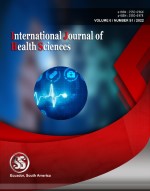Design of some novel dithio π-conjugated ligand-based metal complexes and their semiconductor behavior
Keywords:
Semiconductor, NPBT, Solid-state conductivity, solution conductivityAbstract
Transition metal complexes with sulfur-based ligands are the area of interest for scientists working for semiconducting molecular materials. These complexes have been reported for their interesting electronic architecture and can be used in the manufacture of various kinds of electronic devices including diodes, transistors and integrated circuits. The nitrophenol thiourea benzaldehyde-based metal complexes with various transition metals have been reported for their electrical behavior. The present paper involves synthesis, spectroscopic characterization and variable temperature solid-state conductivity measurement. The complexes show semiconducting nature.
Downloads
References
V. Singh et al., “Photosensitizing activity of ferrocenyl bearing Ni(ii) and Cu(ii) dithiocarbamates in dye-sensitized TiO2 solar cells,” Dalt. Trans., vol. 43, no. 12, pp. 4752–4761, Mar. 2014, doi: 10.1039/c3dt52142g.
J. Piotraschke, A. E. Pullen, K. A. Abboud, and J. R. Reynolds, “Extensively Conjugated Bimetallic (.mu.-Tetrathiooxalato)copper(II) Complex (Bu4N)2[(C3S5)CuC2S4Cu(C3S5)] for Electrically Conducting Charge Transfer Complexes,” Inorg. Chem., vol. 34, no. 16, pp. 4011–4012, Aug. 2002, doi: 10.1021/IC00120A001.
K. Ramasamy et al., “Organotin dithiocarbamates: Single-source precursors for tin sulfide thin films by aerosol-assisted chemical vapor deposition (AACVD),” Chem. Mater., vol. 25, no. 3, pp. 266–276, Feb. 2013, doi: 10.1021/cm301660n.
N. Singh and A. Prasad, “Synthesis, characterization and electrical conductivities of mixed-ligand (N, S/Se) heterobimetallic coordination polymers and their i2-doped products,” Indian J. Chem. - Sect. A Inorganic, Phys. Theor. Anal. Chem., vol. 47, no. 5, pp. 650–656, 2008.
N. Singh and S. Gupta, “Electrical conductivity and molecular properties of organodithioheterobimetallics [PhHg]2[M(dithio)2] {M = Ni, Cu or Zn; dithio = isomaleonitriledithiolate (i-MNT2-) 1,1-dicarboethoxy-2,2-ethylenedithiolate (DED2-) or trithiocarbonate (CS32-)},” Synth. Met., vol. 110, no. 3, pp. 207–212, Apr. 2000, doi: 10.1016/S0379-6779(99)00290-8.
K. K. Manar et al., “Potential Impact of Substituents on the Crystal Structures and Properties of Tl(I) Ferrocenyl/Picolyl-Functionalized Dithiocarbamates; Tl⋯H-CAnagostic Interactions,” ChemistrySelect, vol. 1, no. 18, pp. 5733–5742, 2016, doi: 10.1002/slct.201601280.
K. Maeda, “Metal-Complex/Semiconductor Hybrid Photocatalysts and Photoelectrodes for CO 2 Reduction Driven by Visible Light Kazuhiko Maeda,” Wiley Online Libr., vol. 31, no. 25, Jun. 2019, doi: 10.1002/adma.201808205.
Q. Fang, W. Xu, H. Lei, C. Y. Xu, B. Zhang, and D. Ben Zhu, “Synthesis and characterization of highly conducting PyH[Pd(dmit)2]2 crystal,” Inorg. Chem. Commun., vol. 7, no. 10, pp. 1157–1160, Oct. 2004, doi: 10.1016/J.INOCHE.2004.08.020.
C. Faulmann, F. Delpech, I. Malfant, and P. Cassoux, “Synthesis, structure and characterization of mixed cyclopentadienyl-dithiolene metal complexes, [Co(η-C5H5)2] [Ni(C3S5)2]3•2MeCN and [Ni(η-C5H5)(C3S5)],” J. Chem. Soc. - Dalt. Trans., no. 11, pp. 2261–2267, Jun. 1996, doi: 10.1039/DT9960002261.
U. Parimi, I. Srinath, R. Article PUMADEVI, and I. Srinath, “Synthesis and in-vitro antibacterial activity of some new urea, thiourea and thiosemicarbazide derivatives,” 2012.
J. D. E. T. Wilton-Ely, D. Solanki, and G. Hogarth, “Multifunctional dithiocarbamates as ligands towards the rational synthesis of polymetallic arrays: An example based on a piperizine-derived dithiocarbamate ligand,” Eur. J. Inorg. Chem., no. 20, pp. 4027–4030, Oct. 2005, doi: 10.1002/ejic.200500430.
O. Gerlits, J. Tian, A. Das, P. Langan, W. T. Heller, and A. Kovalevsky, “Phosphoryl transfer reaction snapshots in crystals: Insights into the mechanism of protein kinase a catalytic subunit,” J. Biol. Chem., vol. 290, no. 25, pp. 15538–15548, Jun. 2015, doi: 10.1074/jbc.M115.643213.
S. D. Cummings, L. T. Cheng, and R. Eisenberg, “Metalloorganic Compounds for Nonlinear Optics: Molecular Hyperpolarizabilities of M(diimine)(dithiolate) Complexes (M = Pt, Pd, Ni),” Chem. Mater., vol. 9, no. 2, pp. 440–450, 1997, doi: 10.1021/cm960222p.
H. Fernández-Morán, M. Ohstuki, A. Hibino, and C. Hough, “Electron Microscopy and Diffraction of Layered, Superconducting Intercalation Complexes,” Science (80-. )., vol. 174, no. 4008, pp. 498–500, Oct. 1971, doi: 10.1126/SCIENCE.174.4008.498.
KobayashiAkiko, KobayashiHayao, MiyamotoAkihito, KatoReizo, C. A., and U. E., “New Molecular Superconductor, β-[(CH3)4N][Pd(dmit)2]2,” http://dx.doi.org/10.1246/cl.1991.2163, vol. 20, no. 12, pp. 2163–2166, Apr. 2006, doi: 10.1246/CL.1991.2163.
N. Singh, R. Verma, and N. K. Singh, “Formation and spectral properties of some mixed metal-oxouranium(vi) complexes with 1,1-dicarboethoxy-2,2-ethylene dithiolate,” Synth. React. Inorg. Met. Chem., vol. 20, no. 6, pp. 743–756, Jun. 1990, doi: 10.1080/00945719008048170.
K. Maeda, “Metal-Complex/Semiconductor Hybrid Photocatalysts and Photoelectrodes for CO2 Reduction Driven by Visible Light Kazuhiko Maeda,” Wiley Online Libr., vol. 31, no. 25, Jun. 2019, doi: 10.1002/adma.201808205.
R. A. Castro, M. R. L. Oliveira, J. Janczak, and M. M. M. Rubinger, “Syntheses and characterization of novel heteroleptic nickel complexes with dithiocarbimates and trithiocarbimates,” Inorganica Chim. Acta, vol. 462, pp. 195–203, 2017, doi: 10.1016/j.ica.2017.03.028.
Published
How to Cite
Issue
Section
Copyright (c) 2022 International journal of health sciences

This work is licensed under a Creative Commons Attribution-NonCommercial-NoDerivatives 4.0 International License.
Articles published in the International Journal of Health Sciences (IJHS) are available under Creative Commons Attribution Non-Commercial No Derivatives Licence (CC BY-NC-ND 4.0). Authors retain copyright in their work and grant IJHS right of first publication under CC BY-NC-ND 4.0. Users have the right to read, download, copy, distribute, print, search, or link to the full texts of articles in this journal, and to use them for any other lawful purpose.
Articles published in IJHS can be copied, communicated and shared in their published form for non-commercial purposes provided full attribution is given to the author and the journal. Authors are able to enter into separate, additional contractual arrangements for the non-exclusive distribution of the journal's published version of the work (e.g., post it to an institutional repository or publish it in a book), with an acknowledgment of its initial publication in this journal.
This copyright notice applies to articles published in IJHS volumes 4 onwards. Please read about the copyright notices for previous volumes under Journal History.
















